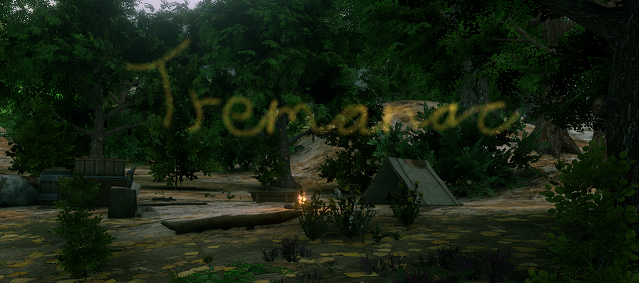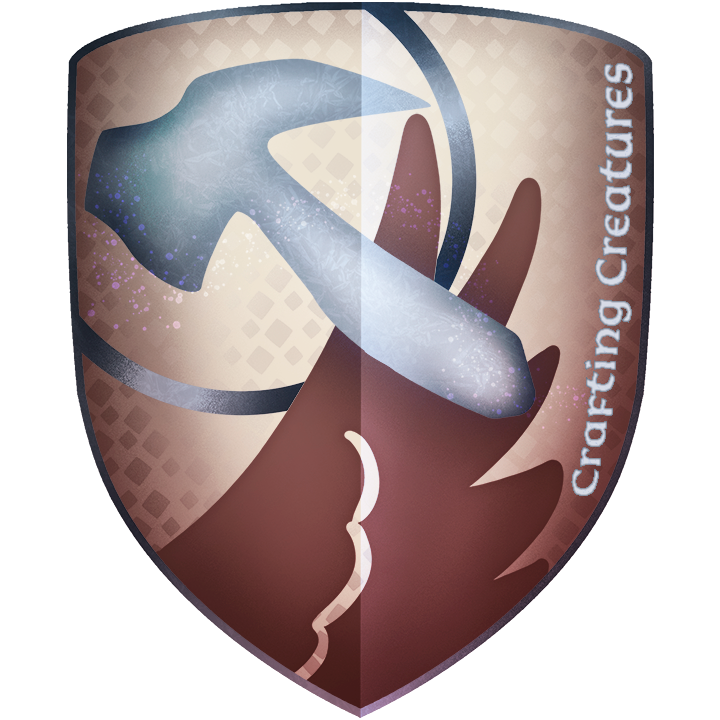Calavaire
The lightweaver is a type of insect that creates hanging nests with multicoloured segments.
Basic Information
Genetics and Reproduction
The lightweavers get their name from the unusual nests they create to serve as a shelter for their eggs. The weavers start by creating a loose frame from small twigs that hungs from a tree branch. They then create a kind of paste that that quickly hardens into translucent panels which fill the gaps between the twigs. This paste is made from the petals of various flowers, with the colour of the panel determined by the type of flower. The weavers typically try to make sure that adjacent panels have different colours.
The nests are gradually built through the spring and summer, with the eggs laid in the autumn. The eggs hatch in early spring as the new growth is starting on the trees. The caterpillar form of the weaver eats for several months before undergoing the metamorphis into an adult beetle,
Adult beetles are not able to reproduce immediately. Amongst those who have studied these insects it is generally believed that further changes occur within a beetle's body during their first hibernation. The construction of the nest also appears to require some trial and error on the beetles' part as attempts by newer adults tend to be smaller, more likely to fall apart, and more likely to have opaque coloured panals. These early attempts tend to provide poor protection for the eggs and frequemtly destroyed by predators.
During the day the light reflecting of or passing through the tunnels acts as a deterent for potential predators, At night, a faint glow from the eggs lights up the panels, creating a similar effect.
The people from the human controlled Empire of Trem refer to these nests as Fairy Lights.
Ecology and Habitats
These dark brown beetles are native to the forest that grows along the banks of the Renaduin. Growing to about half an inch long they feed on smaller insects while in their adult form.
When they first hatch the small grey caterpillars consume the shell they hatched from before crawling outside the nest in search of food. In this larva form they consume living green leaves during the day, returning to their nest at night.
Additional Information
Uses, Products & Exploitation
Lightweaver nests are prized by the elves of the Ancient Kingdom of the Forest as decorative lights. The nests of older weavers are especialy valuable for both their size and the transparency of the coloured panels. The nests are carefully preserved and used to decorate villages during festivals, or to provide more varied lighting within a home.
A set of weaver nests were gifted to the dwaves of the Magrannor Halls during the early years of the third cycle. This gift inspired the dwarves to create the first stained glass which later became popular in the Holy Kingdom of Caresnas.
Since the nests are relatively easy to transport the caretakers of the forest will sometimes move them along with the eggs to areas that have an excess of other insects that are damaging the trees or plants in an area. While spells exists to deter the more damaging insects the introduction of a natural predator is the elves' preferred option to avoid forcing the pests into another area.
This was written for Crafting Creatures
Boon or Bane
At different points in their life-cycle the lightweavers either harm or help the trees of the forest. While in their larval form they an cause great damage to the leaves on a tree, but a reduction in the number reaching the adult stage typically causes more damage as the adults help reduce the number of more destructive insects.Deceiving lights
For most of The First Age the people of Trem destroyed Lightweaver nests whenever they saw them, believing the nests to be a trap set by the elves. According to stories from that time the lights would lead travellers into the hunting grounds of dangerous beasts, or into bogs from which there was no escape. In truth the elves did latch onto this idea and make use of the nests to lure invaders into traps. However, they stopped making such traps once they observed the problems caused by a lack of new lightweavers.
Lifespan
5 years
Average Length
1/2 inch




Comments